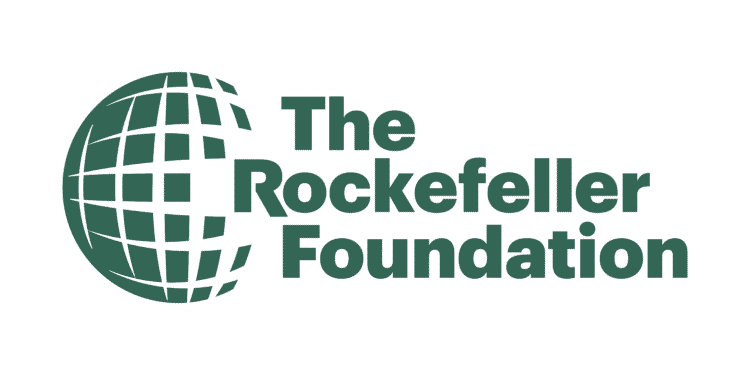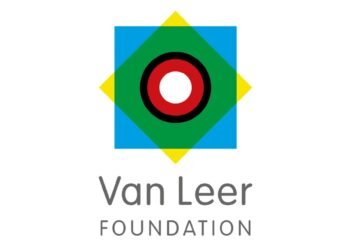What if one organization could tackle our planet’s biggest problems while saving billions in healthcare costs?
This isn’t a hypothetical question. For over a century, this institution has been quietly transforming how we approach major world challenges.
Through innovative partnerships and groundbreaking initiatives, they’re creating real change. Their work spans from ensuring good jobs to building climate resilience.
One powerful example is their Regenerative School Meals program. This connects school nutrition with sustainable farming practices. It supports local farmers while nourishing children.
Another groundbreaking effort is their $100 million Food is Medicine investment. This approach fights diet-related diseases and could reduce healthcare spending by $1.1 trillion.
By collaborating with diverse partners, they develop scalable solutions for social, economic, and environmental challenges. Their approach proves that strategic philanthropy can create lasting impact.
Key Takeaways
- The organization addresses pressing global issues through innovative approaches
- Their initiatives span food security, healthcare, jobs, and climate resilience
- Regenerative School Meals connects agriculture with child nutrition programs
- Food is Medicine investments aim to reduce healthcare costs significantly
- Collaboration with diverse partners creates scalable solutions
- Their work demonstrates the power of strategic philanthropic investment
- These approaches offer models for tackling complex global challenges
About The Rockefeller Foundation
For over a century, this institution has shaped global progress through visionary thinking and practical action. Its enduring commitment to human welfare continues to drive meaningful change across continents.
Our Mission and Historical Legacy
Since 1913, the organization has pursued a single mission: advancing human well-being worldwide. This mission addresses complex social, economic, and environmental challenges through innovative solutions.
Historical achievements include funding critical medical breakthroughs. The yellow fever vaccine development stands as one early success. More recently, Covid-19 testing expansion demonstrated continued leadership in public health.
Through the years, this institution helped establish fundamental public health principles. It created models for disease prevention that remain relevant today.
Global Reach and Operational Approach
Strategic operations focus on key regions including the United States, Africa, and Asia. This geographic concentration allows for deeper impact and smarter resource allocation.
An independent Board of Trustees provides governance oversight. Leadership comes from diverse scholarly and professional backgrounds. This ensures informed decision-making across all initiatives.
The operational model emphasizes innovation nurturing and field-building. Partnerships extend beyond primary regions to support global learning and adaptation.
This approach generates sustainable impact on communities worldwide. It represents a unique blend of strategic vision and practical implementation.
Key Focus Areas and Initiatives
Strategic programs tackle critical global issues through targeted approaches. These efforts address interconnected problems with practical, scalable solutions.
Regenerative Agriculture and Food Security
Modern farming methods transform food systems worldwide. Regenerative techniques improve soil health and boost crop yields.
These practices ensure nutritious, affordable food for communities. They also support local farmers and protect natural resources.
The Alliance for a Green Revolution in Africa increases agricultural productivity significantly.
Climate Change Resilience and Energy Access
Renewable energy projects empower vulnerable communities. Solar mini-grid prototypes in India provide reliable electricity.
The Global Energy Alliance for People and Planet aims to power one billion individuals. This initiative reduces emissions while expanding energy access.
Climate resilience programs help regions adapt to environmental shifts. They combine technology with community-based strategies.
Healthcare Innovation and Disease Prevention
Advanced systems monitor and prevent illness outbreaks. Disease surveillance networks identify health threats early.
Research funding develops better treatments and vaccines. These investments create stronger public health infrastructure.
Innovative approaches address both chronic and infectious diseases. They improve outcomes while reducing medical costs.
Economic Security and Workforce Development
The Campaign for American Workers builds modern safety nets. It promotes fair wages and career advancement opportunities.
Equitable transportation programs connect people to jobs. Skills training prepares workers for evolving employment markets.
These initiatives typically operate within three to five year frameworks. Regular assessments ensure they meet measurable goals effectively.
Cross-sector innovation drives progress across all focus areas. From artificial intelligence to nuclear physics, technological advances serve community needs.
Global Impact and Collaborative Efforts
Meaningful change happens when organizations join forces across sectors. This institution builds powerful alliances that address complex global issues through coordinated action.
Transforming Health Systems Worldwide
Medical networks now connect countries for faster disease detection. Early warning systems help prevent outbreaks before they spread.
These efforts build on historic medical breakthroughs. They create stronger protection against health emergencies.
Better healthcare access improves outcomes while reducing costs. Financial protection programs help families afford treatment.
Advancing Renewable Energy Solutions
Clean power initiatives bring electricity to underserved communities. Solar projects provide reliable energy in remote areas.
The Global Energy Alliance expands access to sustainable power sources. This reduces emissions while creating economic opportunities.
Energy foundations support innovation in renewable technology. They help communities adapt to environmental change.
Building Multiracial Democracy and Economic Equity
Collaborative efforts promote fair representation in governance. They support voting rights and equal participation.
Economic programs focus on closing gender gaps. Women gain better access to resources and opportunities.
Legal initiatives hold corporations accountable for environmental damage. Wrongful death suits address climate-related harms.
Impact investments generate both social benefits and financial returns. This approach multiplies resources for solving big challenges.
Regular measurement ensures programs deliver real results. Continuous improvement adapts strategies to emerging needs.
Conclusion
For over a century, this institution has tackled our world’s toughest problems. Its innovative work continues to create lasting impact across the globe.
Key initiatives focus on health, climate resilience, and food security. These efforts bring meaningful change to the United States and beyond.
Strong research guides every program. Data-driven approaches ensure measurable success and continuous improvement.
Ongoing stories show real progress in building resilience and opportunity. This work proves that large-scale change is possible through smart collaboration.
Discover more about these transformative initiatives. Explore how innovative solutions create a better future for everyone.
FAQ
What is the mission of The Rockefeller Foundation?
Its mission centers on advancing global well-being by tackling major issues like poverty, health inequity, and climate change. It aims to build resilience and expand opportunity for vulnerable populations worldwide.
How does the foundation approach global health challenges?
It works to strengthen health systems, improve disease prevention, and promote healthcare innovation. Efforts include supporting vaccine development and expanding access to quality care in underserved regions.
What role does the organization play in addressing climate issues?
It focuses on enhancing climate resilience and increasing access to renewable energy. Initiatives support communities in adapting to environmental shifts and transitioning to sustainable power sources.
How does it support food security and agriculture?
Through promoting regenerative agriculture, it helps improve soil health, boost crop yields, and ensure stable food supplies. This approach also reduces environmental impact and supports farmer livelihoods.
Does the foundation collaborate with other groups?
Yes, it frequently partners with governments, NGOs, and private sector actors. These collaborations help scale solutions and drive meaningful, lasting change across its focus areas.
What is its historical significance?
Established in 1913, it has a long legacy of pioneering work in public health, scientific research, and social reform. Its early efforts included eradicating diseases and advancing medical education globally.





